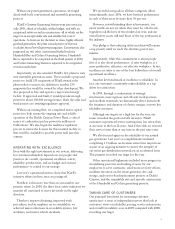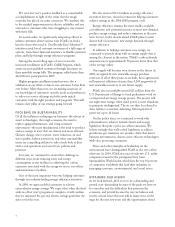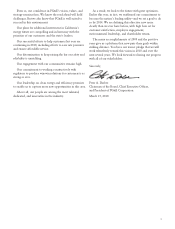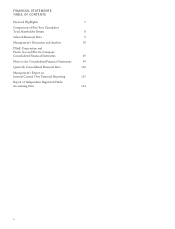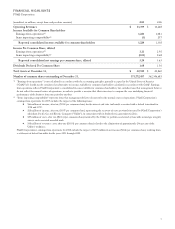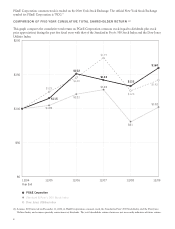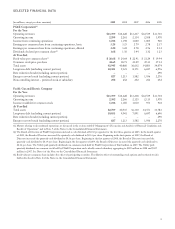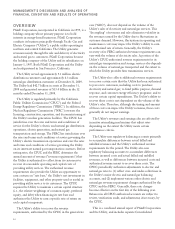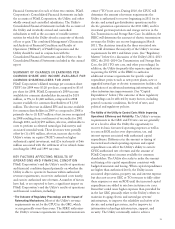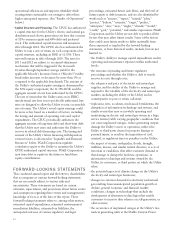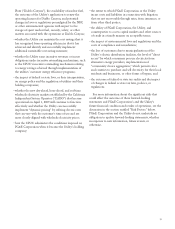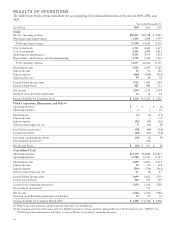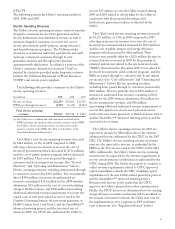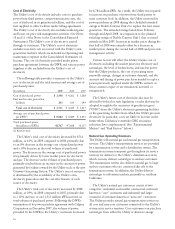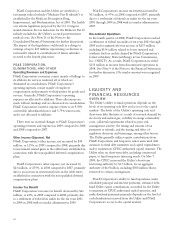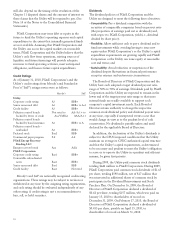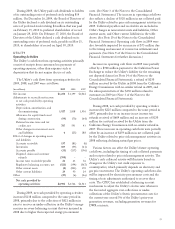PG&E 2009 Annual Report Download - page 17
Download and view the complete annual report
Please find page 17 of the 2009 PG&E annual report below. You can navigate through the pages in the report by either clicking on the pages listed below, or by using the keyword search tool below to find specific information within the annual report.Plant (“Diablo Canyon”), the availability of nuclear fuel,
the outcome of the Utility’s application to renew the
operating licenses for Diablo Canyon, and potential
changes in laws or regulations promulgated by the NRC
or other environmental agencies with respect to the
storage of spent nuclear fuel, security, safety, or other
matters associated with the operations at Diablo Canyon;
• whether the Utility can maintain the cost savings that it
has recognized from operating efficiencies that it has
achieved and identify and successfully implement
additional sustainable cost-saving measures;
• whether the Utility earns incentive revenues or incurs
obligations under incentive ratemaking mechanisms, such
as the CPUC’s incentive ratemaking mechanism relating
to energy savings achieved through implementation of
the utilities’ customer energy efficiency programs;
• the impact of federal or state laws, or their interpretation,
on energy policy and the regulation of utilities and their
holding companies;
• whether the new day-ahead, hour-ahead, and real-time
wholesale electricity markets established by the California
Independent System Operator (“CAISO”) that became
operational on April 1, 2009 will continue to function
effectively and whether the Utility can successfully
implement “dynamic pricing” by offering electric rates
that can vary with the customer’s time of use and are
more closely aligned with wholesale electricity prices;
• how the CPUC administers the conditions imposed on
PG&E Corporation when it became the Utility’s holding
company;
• the extent to which PG&E Corporation or the Utility
incurs costs and liabilities in connection with litigation
that are not recoverable through rates, from insurance, or
from other third parties;
• the ability of PG&E Corporation, the Utility, and
counterparties to access capital markets and other sources
of credit in a timely manner on acceptable terms;
• the impact of environmental laws and regulations and the
costs of compliance and remediation;
• the loss of customers due to municipalization of the
Utility’s electric distribution facilities, the level of “direct
access” by which consumers procure electricity from
alternative energy providers, implementation of
“community choice aggregation,” which permits cities
and counties to purchase and sell electricity for their local
residents and businesses, or other forms of bypass; and
• the outcome of federal or state tax audits and the impact
of changes in federal or state tax laws, policies, or
regulations.
For more information about the significant risks that
could affect the outcome of these forward-looking
statements and PG&E Corporation’s and the Utility’s
future financial condition and results of operations, see the
discussion in the section entitled “Risk Factors” below.
PG&E Corporation and the Utility do not undertake an
obligation to update forward-looking statements, whether
in response to new information, future events, or
otherwise.
13


